Fast radio bursts — what in the universe are they?
Somewhere deep in space, ultrafast fireworks are going off, releasing as much energy in a single millisecond burst as our sun does over 80 years. But what are they?
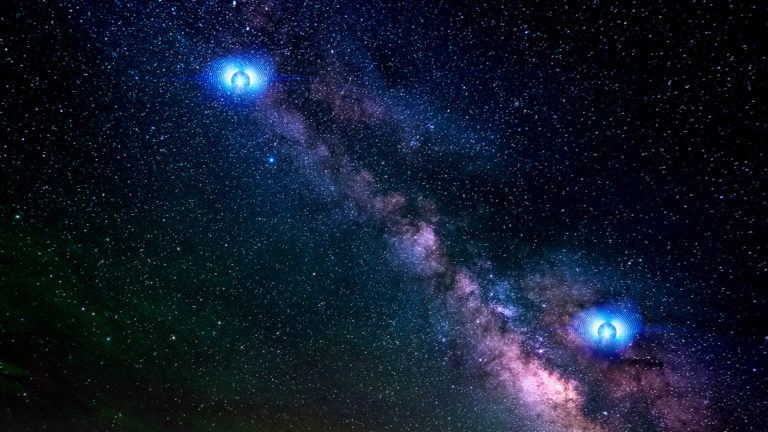
Since they were first detected in 2007, astronomers have been puzzling over the cause of powerful intergalactic pyrotechnics, known as “fast radio bursts” (FRBs). This bafflement stemmed, in part, from a lack of sources to study: between 2007 and 2018, only a couple of dozen FRBs were observed.
Most seemed to be one-off explosions, leading researchers to believe they were caused by cataclysmic events like the death of a star or the merger of two black holes. One burst, however, repeated. That suggested at least some FRBs are formed by a less destructive mechanism.
But what are they? That question remains unsolved, but perhaps not for much longer. In early 2019, the Canadian Hydrogen Intensity Mapping Experiment (CHIME) – a radio telescope in British Columbia – announced the unprecedented detection of 13 new flashes, including another repeater.
Still, theories abound as to what causes FRBs. Here are 10 theories – some plausible, some wild – about the origins of these cosmic light shows.
1. Us?
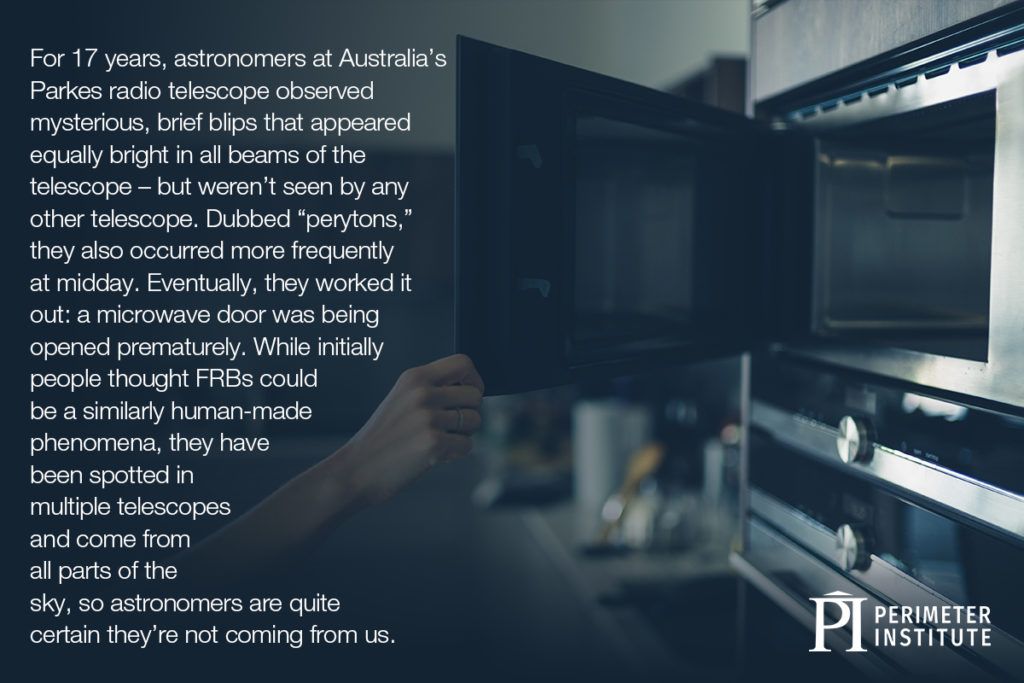
2. Merger of two compact objects
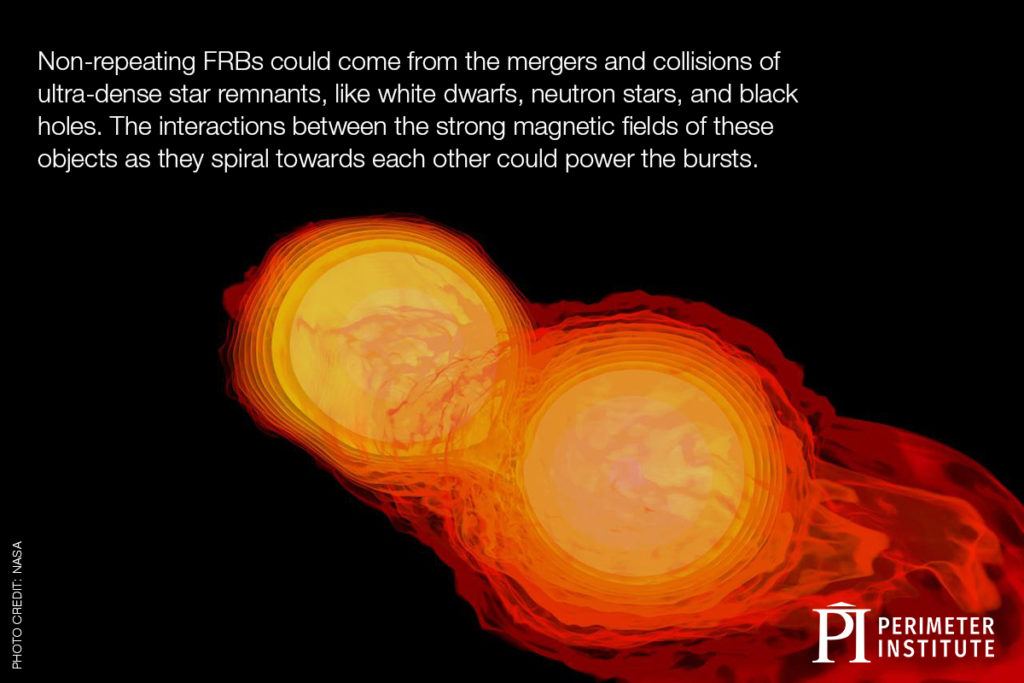
3. Collisions between neutron stars and asteroids
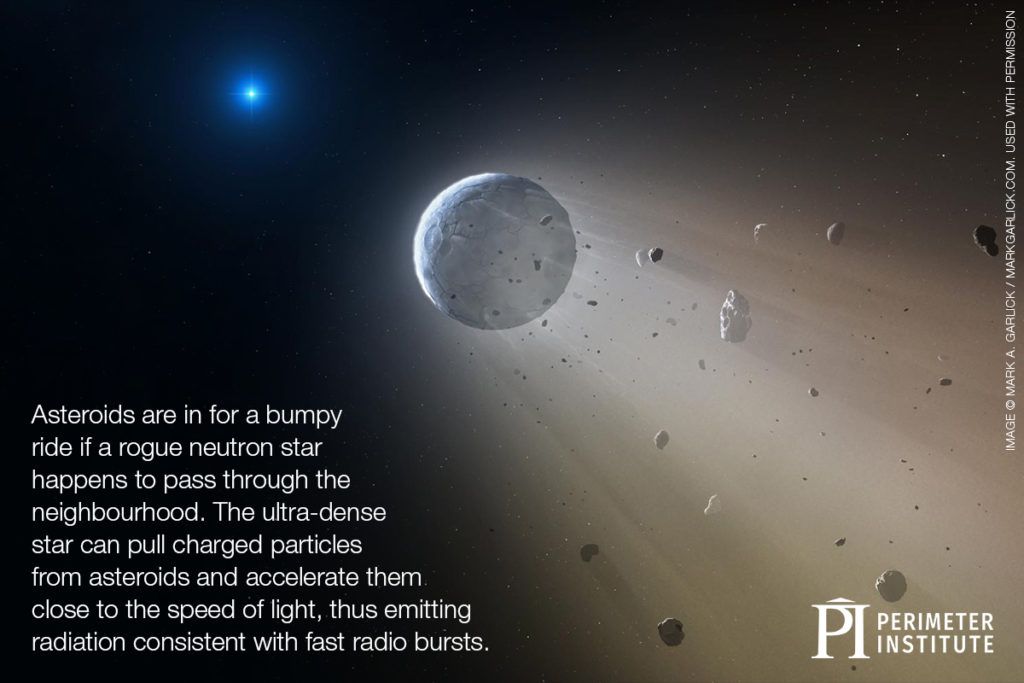
4. Strange star crust collapse
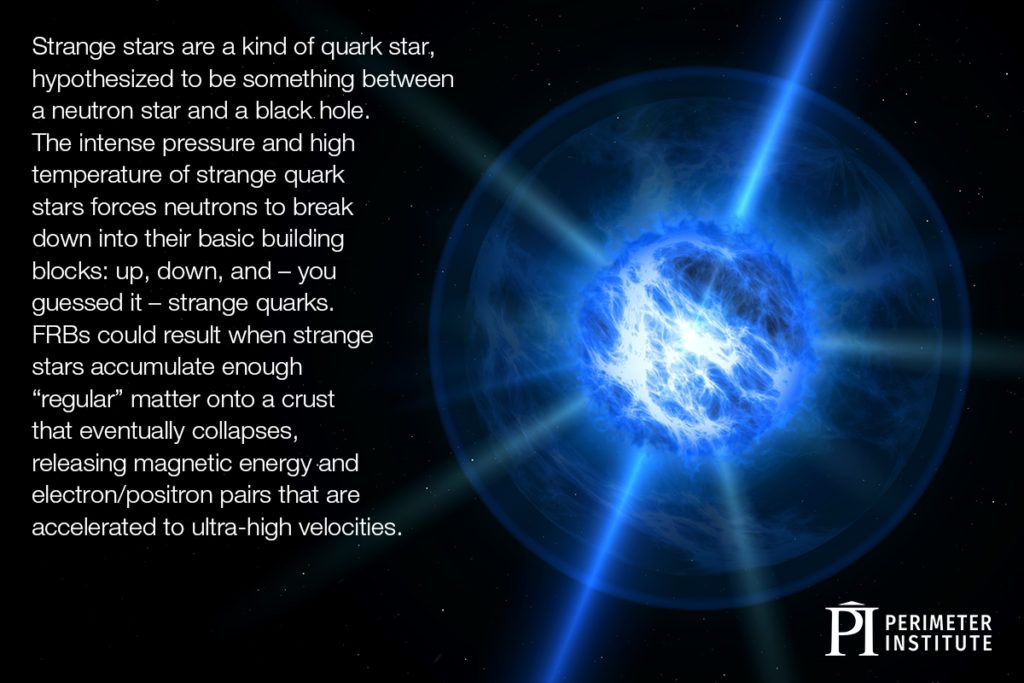
5. Magnetar giant flares
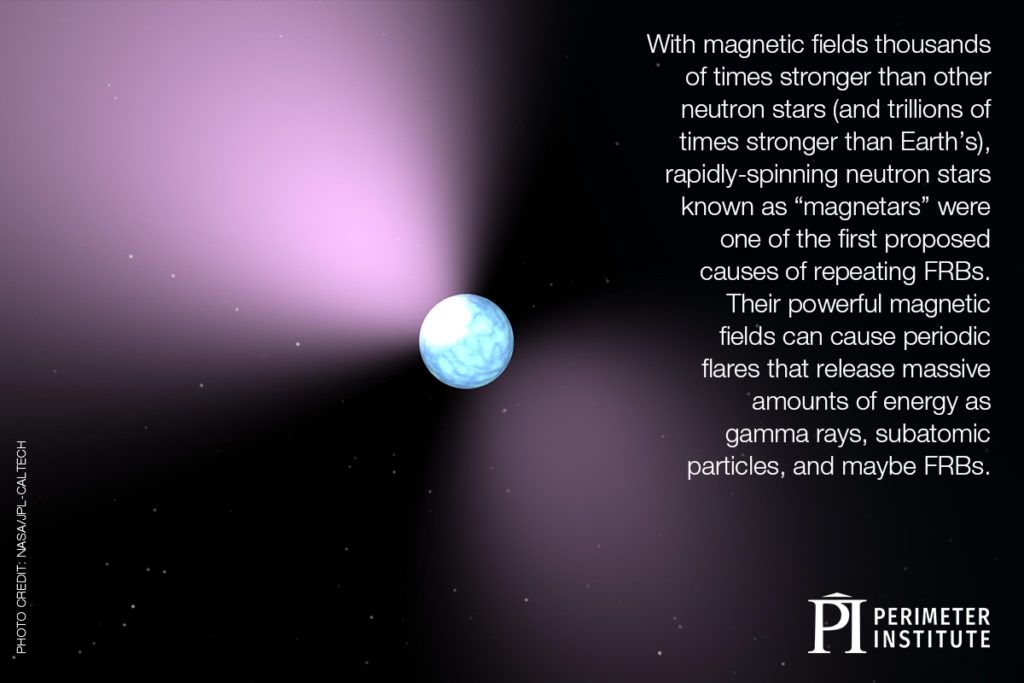
6. Mini blazars

7. Pulsar starquakes
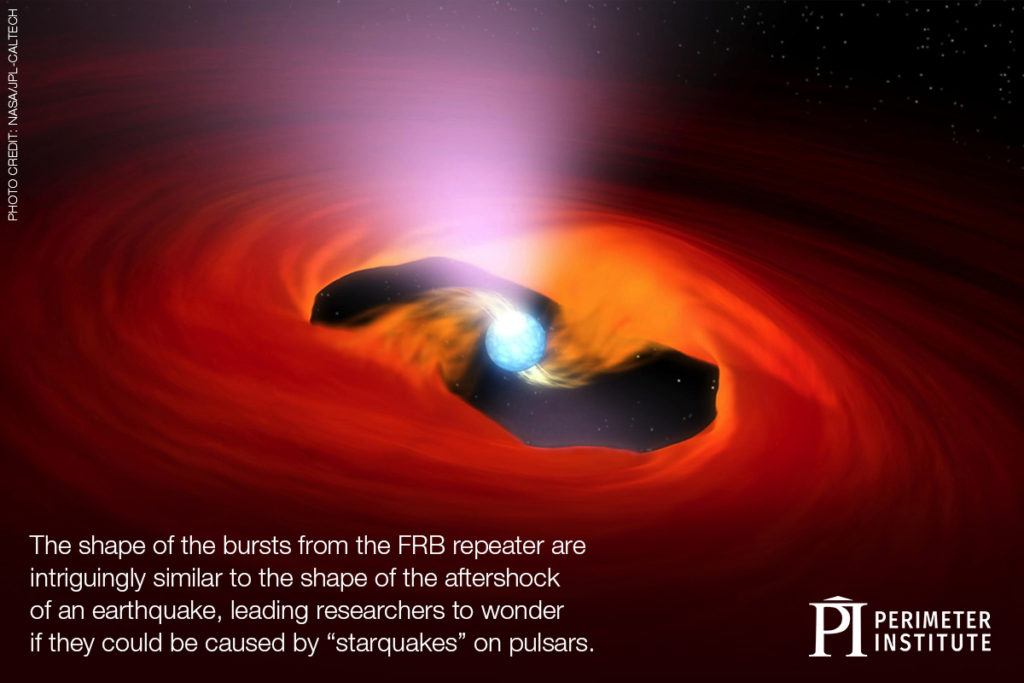
8. Pulsar lightning

9. Superradiance

10. Aliens
























































































